Stop considering bacteria to be an absolute evil and fight them with all available methods. Among the two kilograms (yes, don’t be surprised) of microorganisms inhabiting our body are full of friendly ones, and many of them take care of skin health. To support good bacteria, cosmetics with pro- and prebiotics have been developed.
- What are probiotics and prebiotics
- Beneficial features
- How do probiotics work on the skin?
- What cosmetic products use probiotics?
- Review of products with probiotics
What are probiotics and prebiotics
Probiotics are living microorganisms, as well as substances of microbial and other origin that:
have a positive effect on the functioning of microflora;
contribute to better adaptation of the human body to external conditions.
Prebiotics are substances that create a favorable nutrient environment for the proliferation of microflora. First of all, this is fiber (if we talk about prebiotics obtained from food) and plant extracts, rich in plant polysaccharides and other beneficial substances.
By the way, the well-known beta-carotene from carrots is a prebiotic.
Beneficial features
Microflora, which includes about 500 different types of microorganisms, is one of the components of the skin's protective system. Microflora components:
are part of the skin's immunity;
maintain the integrity of the hydrolipid mantle;
maintain an optimal level of moisture;
sometimes have antioxidant activity.
Probiotics also include bacteria that are not native to humans, but can have a beneficial effect on the body. For example, some marine microorganisms or thermal plankton.
How do probiotics work on the skin?
Imitate the action of your own microflora, displacing pathogenic microorganisms.
Strengthen local immune defense.
Strengthen barrier function.
Restore skin and relieve inflammation.
Promote the normal functioning of the skin as a whole, maintaining its hydration and interaction between all cells.
Products with probiotics are especially relevant for the skin in the following cases.
After the sun and sunburn
The effectiveness of “cream” made from kefir or sour cream is largely due to the presence of probiotics in them - bifidobacteria and lactobacilli, which relieve inflammation, strengthen the immune system, soften and nourish the skin, and soothe burning sensation. These bacteria do not live on the skin, but they manage to do a good deed even in the role of “tourists” (this is the name given to microorganisms that are not characteristic of the skin that end up on it).
Protection from negative effects of the external environment
The composition of the skin microflora changes depending on the season, the intensity of sunlight and temperatures. The air of the metropolis, free radicals - all this destroys the microbiome. Probiotics are an ingredient that is often included in cosmetics aimed at protecting against aggressive environmental influences.
Of course, probiotics for the skin and intestines are different classes of microorganisms, and smearing yogurt on your face is as useless as eating cream. © iStock
Correction of age-related changes
Yes, we age along with our microbiome, so one of the interesting innovative trends in anti-aging cosmetics is restoring the balance characteristic of young skin.
Extreme dry skin
This condition indicates depletion of the skin microbiome (the totality of microorganisms that inhabit the skin), so it makes sense to enrich it.
Atopic dermatitis
A connection between atopic dermatitis and an imbalance in the skin microbiome and the predominance of S. Aureus (Staphylococcus aureus) in it has been proven. Cosmetics are designed to fill the gaps and restore balance, displacing harmful microflora. Although the disease is genetic in nature (as are the characteristics of our microflora), supporting the skin microbiome with the help of cosmetics with probiotics is a modern trend.
When treating skin diseases, especially in children, doctors are increasingly focusing on the benefits of probiotics.
Seborrheic dermatitis
It is also associated with a disruption of the skin microbiome, when one of the Malassezia fungi becomes too active. Replenishing healthy microflora helps restore balance by reducing fungal activity.
Rosacea
The connection between this disease and a microbiome disorder has also been established. And the task of probiotics in this case is to eliminate the consequences of the activity of bacteria associated with the demodex mite, one of the culprits in the development of rosacea.
The bacterial nature of this most common dermatological disease is beyond doubt. Stimulating the growth of microorganisms that are lacking for a healthy balance of the skin microbiome will also be beneficial - probiotics actively suppress inflammatory reactions.
What cosmetic products use probiotics?
Let’s say right away that probiotics in their pure form are not used in cosmetics, since living microorganisms are extremely unstable and require a special nutrient medium, completely different from face cream. Cosmetics with live bacteria would not last longer than kefir. The composition of probiotic products usually includes fragments of microorganisms - lysates, which have the same effect as the microorganisms themselves; enzymes or other substances needed by the skin produced by bacteria.
There is no reason to doubt the effectiveness of lysates - vaccines and serious medications are created in a similar way, which contain exactly the necessary fragments of microorganisms.
Review of products with probiotics
Softening melting body milk with bifidocomplex and mango butter, Garnier
The friendly bifidocomplex improves the condition of dry and sensitive skin, softens it and, in combination with exotic mango butter, makes the epidermis noticeably more elastic.
Reviews
Gulya: “The best product for moisturizing dry skin, tested on myself, every winter I suffered with dry skin on my legs and peeling - I finally found the really best product.”
Svetlana: “I took the milk to the sea as an after-sun product, I really liked it. It is quickly absorbed, has an unobtrusive aroma, and most importantly, after it the skin is velvety, moisturized and not sticky.”
Anna: “I really like it, I bought it in November, now I’m finishing the package, I’ll buy more! The texture is pleasant, spreads easily, absorbs quickly, and the pleasant smell is almost unnoticeable. Moisturizes very well, without being greasy, you can get dressed immediately after absorption. And after rubbing, there is no unpleasant stickiness left on your hands. The consumption is quite economical. I recommend it to those with normal skin."
Strengthening care against signs of aging at different stages of Slow Age formation, Vichy
The innovation of the formula lies in its ability to minimize existing age-related changes and prevent the appearance of new ones. It contains an antioxidant complex of baicalin, vitamins C and E, as well as the probiotic Bifidus, which restores the barrier functions of the skin.
Reviews
Olga: “I purchased a second package for the spring. I used it in late summer and autumn and was very pleased. A product with SPF 25 is good protection for the city. I get spots from the sun, but with this cream they went away, my skin seemed to glow, it moisturizes well too. The cream smells good, subtle unobtrusive aroma. And of course I only used it during the day, since it has SPF. Not suitable for overnight care."
Olesya: “I have very oily skin on my forehead, I couldn’t find a cream, during the day my forehead became so oily that I blotted it with a napkin. After using this cream, the skin became matte, smooth, less porous, and pleasant to the touch. The fatness is gone. I've been using it for 2 months. I bought it at the pharmacy. I recommend".
Anna: “I’ve been using it for several months. After it, the skin became denser and more moisturized. I consider it a plus that it protects against ultraviolet rays and prevents sunburn. Smells nice and absorbs well.”
Lipid-restoring cleansing cream-gel for the face and body of babies, children and adults Lipikar Syndet AP+, La Roche-Posay
The enzyme from the Aqua Posay Filiformis bacterium helps restore the skin's protective barrier. Thanks to shea butter and vitamin B3, the product has soothing and strengthening properties.
Review
Ekaterina: “A miracle remedy! I recommend. I can say that it perfectly cleanses the skin of all impurities and really has a calming effect. More than once I have had the opportunity to verify the effectiveness of La Roche-Posay products, in particular, I really love the Lipikar line.”
Basic care for all skin types, Life Plankton Essence, Biotherm
Thermal plankton bacteria contain many nutrients and enzymes native to our skin, so the effect of this ingredient is extremely beneficial. Conveniently, the product is equally suitable for all skin types.
Double-action youth activator concentrate Advanced Génifique Sensitive, Lancôme
The youth activator effect is provided by a complex of probiotics (lacto-, bifidobacteria, a certain type of yeast) in combination with antioxidants. Researchers have proven the effectiveness of the concentrate for all 10 main signs of youthful skin: radiance, tone, even tone, firmness, cleanliness, elasticity, freshness, density, absence of wrinkles, smoothness.
Reviews:
Elena: “The serum is excellent. Absorbs well into the skin. I apply it at night under the cream. In the morning, the face is fresh and toned. This is that rare product that you definitely want to buy again. In general, I love the Génifique series.”
Natalia: “It is recommended to use the product in a monthly course, and I noticed changes in the structure of the skin after 10 days of regular use! It’s a pity that you can’t attach before and after photos in the comment, I have them, and they speak better than any words! The skin became moisturized, a beautiful healthy color, like after a vacation. And, most importantly for me, nasolabial wrinkles have become much less noticeable! I didn’t even hope for such an effect, and this was what surprised me the most.”
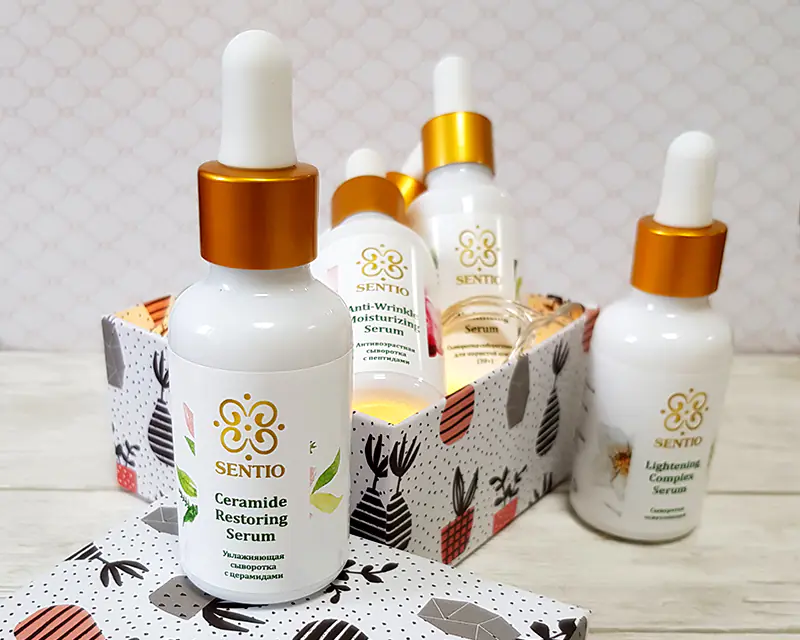
Today, no one questions that human health depends on microorganisms. However, only in the last ten years have people started talking about their effect on skin health. The discovery of the skin microbiome has revolutionized the cosmetic industry's understanding of product compositions. If 10-15 years ago it was normal to treat acne with antibiotics, skin sterilization with chlorhexidine, triclosan, alcohol, benzoyl peroxide, today cosmetics with pro- and prebiotics are gaining popularity.
A child first encounters microorganisms at birth, passing through the birth canal. This is how it gains immunity and populates the skin with the necessary bacteria and fungi. This allows you to avoid skin problems in the future. It is important not to interfere with the functioning of the baby’s skin and allow the microflora to form independently.
Difference between probiotics and prebiotics
Probiotics are living microorganisms that are skin-friendly, while prebiotics are nutrient media that promote the proliferation of saprophytic bacteria. Probiotics also include lysates - these are destroyed, non-living cells of microorganisms.
The use of probiotics is associated with problems:
— control of the number of friendly microorganisms in cosmetics;
— safety of cosmetics;
— how to preserve cosmetics if preservatives inhibit the vital activity of microorganisms;
— whether bacteria will lead to an imbalance of the skin microbiome;
— production control;
— changes in legislation.
This is not a complete list of questions. Therefore, prebiotics have come to the first place in cosmetics. In these nutrient media, beneficial microorganisms grow and bad ones die.
You can recognize prebiotics in cosmetics by the following names: oligosaccharide, inulin. Scientific research has linked certain types of microorganisms to skin diseases. Cutibacterium (formerly Propionibacterium) acnes causes acne, Staphylococcus Aureus causes atopic dermatitis, and rosacea is thought to be associated with the growth of several microorganisms.
Sentio's focus is on natural healing
In the new Sentio serums, the role of prebiotic is given to several components that create powerful support for the skin microbiome. The effect of serums is enhanced by hyaluronic acid of several sizes and lipophilic components, which, without disturbing the skin structures, pull water-soluble components into deeper layers.
Today, the percentage of people suffering from eczema, dermatitis is high, and an unexplored and complex disease such as rosacea has appeared. Sentio has not avoided this problem by creating the Anti-Cuperose Serum, which is also perfect for problem skin with rosacea.
What research says about the connection between diseases and microorganisms
Problem acne vulgaris includes several factors:
- increased sebum production,
- hyperkeratinization of hair oil,
- colonization by Propionibacterium acnes,
- inflammation.
The human skin microbiome contains a wide range of microorganisms, including bacteria, viruses and fungi. A delicate balance of these microorganisms is essential for skin barrier function. Propionibacterium acnes represents almost 90% of the human skin microbiome in healthy adults. Acne is a chronic, recurring problem that requires long-term treatment. Nowadays, prolonged use of antibiotics has led to the emergence of bacterial resistance to them.
In a study by Sanford JA, et al. J Immunol. 2019 showed that sebocytes (special lipid-producing cells associated with hair follicles and sebaceous glands) secrete appropriate inflammatory mediators for the formation of cutaneous acne. In response to this, Cutibacterium acnes multiplies, which love the airless warm environment of the mouths of the sebaceous glands. The detailed mechanisms underlying the expression of inflammatory genes are still unknown. Almost all follicles contain high concentrations of bacteria, but only a few become inflamed. This study shows that short-chain fatty acids produced by P. acnes under environmental conditions conducive to fermentation will stimulate the expression of inflammatory genes in sebocytes. These data provide new insights into the regulation of inflammatory gene expression in the skin, further characterize the contribution of sebocytes to epidermal immunity, and demonstrate how changes in the metabolic state of the skin microbiome may contribute to inflammatory acne.
Corvec S, et al. Ann Dermatol Venereol. 2019 write that Cutibacterium acnes and its 5 subspecies are involved in several inflammatory skin diseases, including acne, folliculitis and progressive macular hypomelanosis.
A review by Castillo DE, et al. Dermatol Ther (Heidelb) 2018 talks about new alternatives to traditional therapy: antimicrobial peptides, natural engineered antibodies and bacteriophages. Bacteriophages have been shown to play a role in human skin health and disease. There is evidence to support phage therapy for many types of skin infections.
According to Van TC, et al. Open Access Maced J Med Sci. 2019 atopic dermatitis (AD) is a common chronic relapsing genetically determined inflammatory skin disease. Staphylococcus aureus (S. aureus) plays an important role in the pathogenesis of AD. Atopic skin is susceptible to infection by S. aureus.
S. aureus was found in skin lesions in 83.8% of patients with AD, while only 37.5% of healthy people had this species of bacteria.
Existing methods not working?
Prebiotics for microflora quality
A study by Akiyama H, Oono T, Huh WK, 2002 showed the possibility of treating atopic dermatitis (AD) caused by Staphylococcus aureus with glucooligosaccharide (G-OS). The experiment shows that the number of colonies of S. aureus cells in a 0.5% sodium chloride solution with the addition of 5% G-OS (pH 4.8) is 10 times lower than in a 0.5% sodium chloride solution (pH 6.6 ; control) after 24 hours. This is probably due to the fact that G-OS can inhibit the production of glycocalyx by S. aureus cells and inhibits growth on squamous cells with atopic dermatitis.
Interesting data was provided by a manufacturer of cosmetic components. The combination of inulin and alpha-glucan oligosaccharide inhibits the activity of skin pathogens: Staphylococcus, Carynebacterium, Propionibacterium acne, Gardnerella vaginalis. At the same time, it promotes the growth of friendly microflora: Micrococcus kristinae, Micrococcus sedentarius, Staphylococcus capitis, Corynebacterium xerosis, Lactobacillus pentosus.
From the above studies, we can see a shift in focus from cleansing the skin “squeaky clean” from all microorganisms to friendship and nurturing the necessary ones.
We wanted to prove the need for the use of prebiotics in cosmetics so that there would be no questions or doubts. Our new line of prebiotic serums will help you on your journey to improving your skin health.
Women are accustomed to seeing the label “contains a prebiotic” on dairy products. These beneficial bacteria help digestion and create favorable microflora in the intestines. But what do these bacteria have to do with cosmetics? You can often find face cream with probiotics in stores. The article describes the importance of prebiotics and probiotics in cosmetics and what effect they have on facial skin.
Probiotics
A probiotic is microelements, substances of microbial origin that affect the microflora and help the human body better adapt to the negative influences of the environment.
Prebiotic – elements that create favorable conditions for the development of microflora. Prebiotics include fiber and plant extracts.
On a note. These bacteria are essential for the human body. Prebiotics can normalize the microflora of the skin. Probiotic skin care makes it elastic, smoothes wrinkles, saturates it with moisture, and adds elastin and collagen to the epidermis.

Prebiotic skin care
Prebiotic skin care
It is no secret that human skin contains various microorganisms, including beneficial bacteria. It is necessary to maintain balance. Otherwise, it will have a negative effect on the immune system. Choosing the wrong cosmetics is a common mistake girls make. Of course, in cosmetic preparations, unlike food, there are no living bacteria. The prebiotics contained in the creams are intended to restore the microbiome of the skin.
Prebiotic skin care has the following effects:
- Strengthens the immune system;
- Restores the body's defenses;
- Relieves inflammation, softens the skin;
- Helps the skin function normally;
- Saturates it with moisture;
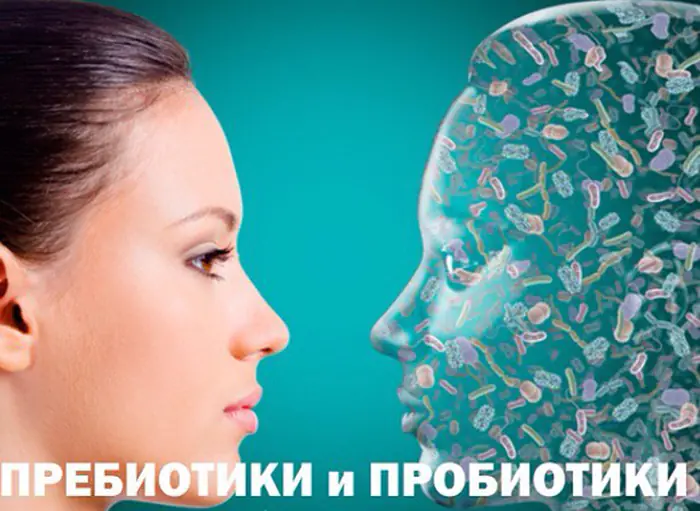
Probiotics provide skin with moisture
Type of cosmetics
Various cosmetics are available for sale in pharmacies and specialty stores.
Cosmetics containing prebiotics can be in the form of:
- Skin balm;
- Mineral water;
- Skin gel;
- Face creams;
- Body lotion:
- Skin oils;
- Body milk;
- Moussa;
- Foams;
- Tonic;
- Serums;
- Rejuvenating mask.
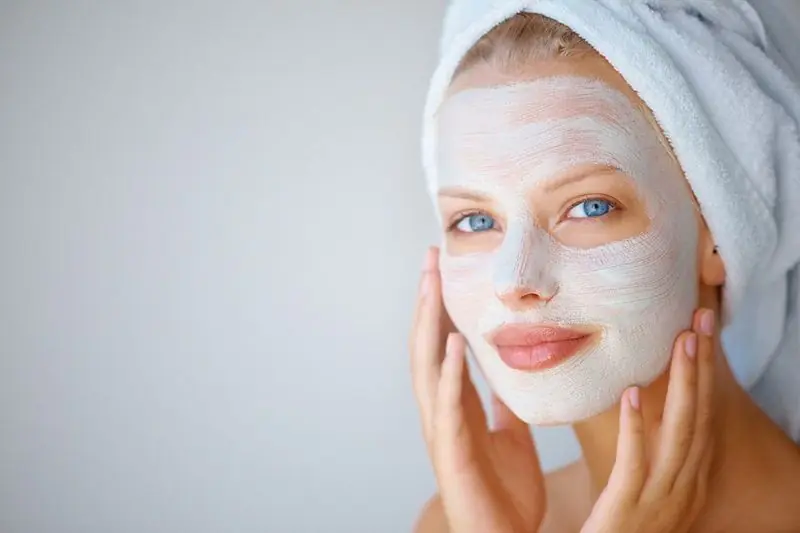
Face cream with probiotics
There are several recommendations for the proper use of cosmetics containing prebiotics and probiotics:
- Choose the right product for yourself. To do this, you should familiarize yourself with the products offered and read the recommendations of cosmetologists.
- You should choose a remedy based on the problems that arise. If you experience dry skin, you can give your preference to the American brand Aleviac.
- It is best to consult a dermatologist before use.
- Preparations containing prebiotics and probiotics are applied to the face 1-2 times a day.
- Quantity – within 5 g. at once.
- Course of use – 2 months.
Important! Before using any product, you should consult an allergist and dermatologist. A specialist will be able to assess the condition of the body and tell you whether it is possible to use this drug.

Cosmetics with probiotics
Recommended cosmetics
A specialist will be able to select the appropriate remedy. When purchasing, you need to pay attention to the “probiotic” label.
Below are the most common cosmetics containing probiotic bacteria:
- AnneMarie Borlimd – suitable for sensitive skin types. Helps protect sensitive skin from environmental stress. Not only the environment, but also stress, the atmosphere of a modern metropolis and much more have a detrimental effect.
- Probulin – suitable for fighting wrinkles. The product contains four active ingredients and 12 healthy strains of bacteria. The product contains nutrients to maintain the natural microflora of the skin.
- Andalou Naturals is a new product that not only helps to care for facial skin, but also helps to even out the relief and gives the skin a radiant effect. The product, in addition to the probiotic, contains natural stem cells and plant extracts. Contains: aloe juice, yacon tuber juice, Alpha-glucan oligosaccharides.
- Missha is a Chinese-made product. Suitable for sensitive skin. Works to maintain immunity and fight external irritants.
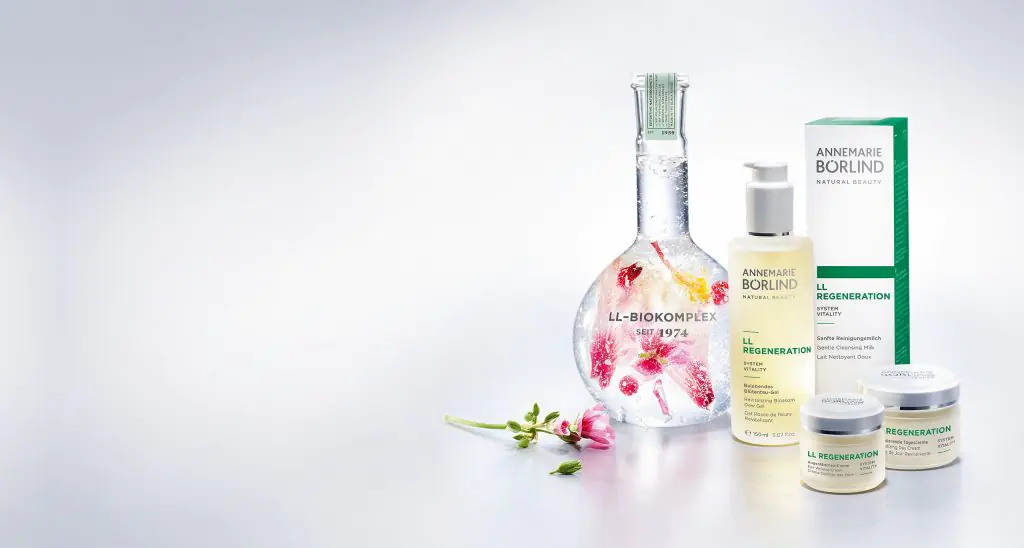
Advice from experienced cosmetologists
From a certain age, especially after 50, a woman begins to think about such important issues as maintaining her own beauty.
What do professional cosmetologists advise on this issue:
- You should start taking care of your facial skin at the age of twenty-five to thirty years. The sooner a woman thinks about maintaining her youth, the longer she can maintain it;
- Washing your face with tap water is harmful due to the high chlorine content. The skin begins to dry and peel. It is best to use special products, mineral water containing prebiotics;
- You should apply the cream in the morning, about forty minutes before leaving the house, and in the evening, at least one hour before going to bed. Excess cream is removed from the face using a napkin.
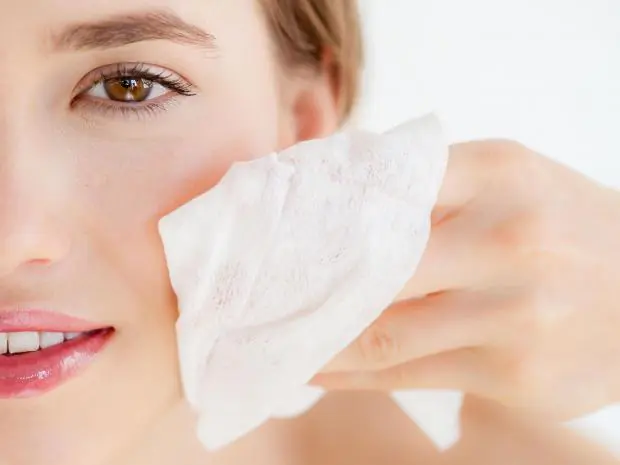
Excess cream is removed from the face using a napkin.
- Any cosmetic product is applied to previously cleansed skin;
- The effect of the cream does not depend on the thickness of the skin. Special products penetrate well into the deep layers of the epidermis, so you should not apply excessive amounts of cosmetics.
- Cosmetics begin their activity when the body is in the most relaxed state.
- To create the most rejuvenating effect, it is worth combining special cosmetics with a course of facial massage.
Every year the amount of cosmetics produced to rejuvenate and nourish the skin of the face and body is increasing. It is best to give preference to proven products or well-known brands. If a woman has difficulty making a choice, she should consult a doctor.



